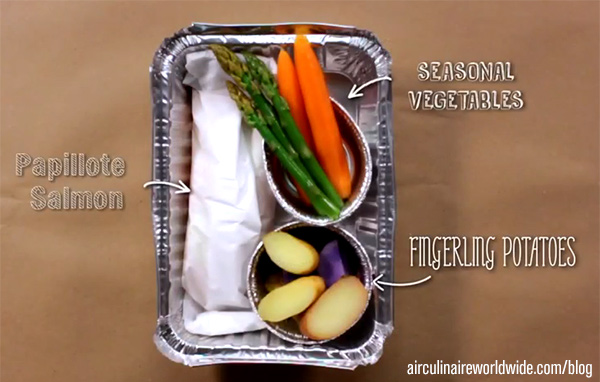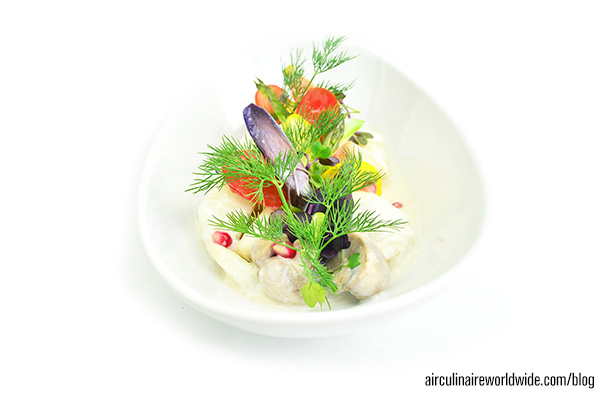With the best will in the world, as a corporate or VIP flight attendant, we aim to provide the very best catering we can to our guests. However, once we have taken off, if there is a problem with the catering, there is no assistance at 35,000 feet – we are on our own. We may have the most perfect catering order, delivered on time and have space to pack it all away, for once! But, what happens once you realize you have an extra passenger or two – or more?
Of course, if you know in advance to their arrival, it may be possible to liaise with the caterer and get some extra items delivered with the original catering order. However, in most cases, it will be just after boarding passengers and stowing the catering, when the real situation comes to light. So, what do you do, once the aircraft door is closed? Here are some tips to help you handle this situation
- Control portion size by slicing steak or chicken for example and ‘fan’ it out on the plate to make the portion look bigger. This could make one protein portion feed two people or double the catering if passengers are in excess!
- The portions of rice, potatoes and vegetables are usually much larger than is needed for one person, so these can be used effectively to your advantage. You can use a warmed espresso cup to create the perfect rice timbale while only using a small amount of rice. Vegetables can be used in an artistic manner to create a good-looking plate without anyone noticing the portion size. A small bundle of carrots wrapped in a chive bow is an easy example of this or make a stack of green beans.
- Keep a well-stocked pantry. It sounds obvious, but if you have space onboard, the pantry items can be a stroke of genius. Using pre-cooked packet rice – this could potentially fill out the carbohydrate options or would be useful if there are no crew meals available. You could also potentially make a whole new dish (See Tip 7 – mix and match). A tin of good quality bisque or soup may also save the day for a hungry guest or crewmember. Adding crackers to the cheese tray also makes it look more substantial – and often within Europe (apart from the UK where it is standard!) the crackers are not always provided unless requested.
- Remember that less is more. Most of our guests want an experience and a nicely presented meal, not necessarily family-style piled up on a plate. Some cultures do request this, though, in which case buffet-style service is recommended. Hopefully, as they serve themselves, they will not realize there is less catering.
- Fruit basket – if you have a long flight, you can whip up a fruit platter as an extra course or dessert. But only if you trust your knife skills and it is not turbulent!
- Use your creative license with balsamic glaze or chocolate sauce from your pantry, as appropriate, to disguise negative plate space. Be sure not use too much as to overwhelm the dish. You could also argue that ‘negative space’ is a food trend currently, but using distraction is a lot easier!
- Mix and match – is there anything from another dish that you can use to create something else? Is there a sauce you can serve with another meat? Can you add some leftover chicken to a mushroom risotto to make it something else? What about the pesto from the Caprese salad – used with plain pasta and Parmesan from the Bolognese? Be creative. This is also useful if there are children onboard, as they often show a preference for simple food.
- In an emergency, use the crew meals if you have them, to swap out another dish or make the catering stretch that bit further. There are usually enough spare meals to feed everyone, end of flight.
- A garnish pack can be a lifesaver, to not only fill out the plate or decorate but again to repurpose another dish if necessary. Talking of garnish – look out for edible flowers or micro greens on the cheese or dessert tray to use as garnish on other dishes. The nuts (if no allergies) or dried fruit on the cheese tray may also be good in a salad or used to garnish a Middle Eastern dish or to decorate a dessert. Spare salad leaves – you can use them as garnish too. Have a plain Greek yogurt in the chiller from breakfast? That could be used as a garnish for soup, a main meal, a dessert sauce or even a dip.
- Finally, stay calm and relax and think creatively. Hopefully, you have a cabin door or curtain on your aircraft – the passengers will not see you flustered or trying to make miracles happen. Somehow, nearly always we do!
Questions?
If you have any questions about this article, contact Tricia Green at triciagreen16@hotmail.com.
| This is an article by guest author Tricia Green, Head of Cabin Services and industry expert based in Cyprus. Any thoughts expressed in this article are entirely Tricia’s and do not necessarily reflect the views of Air Culinaire Worldwide. |
If you would like to be considered for becoming a guest author, please contact socialmedia@airculinaire.com.












